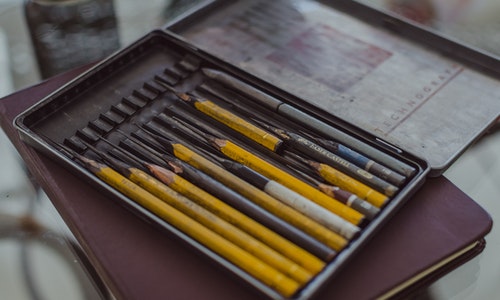Overview
On our four-year BA Art History, Visual Culture and Media Studies (including foundation year), we work with you to develop your subject-specific knowledge, and to improve your academic skills. You receive a thorough grounding in these areas during your foundation year (known as Year Zero) to prepare you for a further three years of undergraduate study at Essex.
After successful completion of Year Zero in our Essex Pathways Department, you progress to complete your course with our School of Philosophy and Art History.
At Essex, you will explore a broad spectrum of art, visual culture and media, both past and present. You’ll learn about canonical forms of art and architecture and cover a range of visual culture, such as video art, medical photography, tattoos and objects from political protests. You’ll also study the various forms of contemporary media that shape our everyday lives, including film and television, photography, social media and advertising.
To study on our course, you don’t need an A-Level in art or art history. In fact, we believe that the best students of visual culture are those who bring fresh eyes and new perspectives to their objects of inquiry.
What’s more, you’ll have the opportunity to cover a range of disciplines through your modules during which you will combine different approaches to the study of visual media, hone your critical thinking and develop a deeper understanding of the histories and meaning of the visual world around you. You will develop the skills you need to transform your passion for art, visual culture, and media into the ability to uncover new insights about the material you study.
Throughout the course you’ll cover key areas including but not limited to:
- World cinema
- Digital media
- Contemporary art
- Politics
One of the major reasons for choosing Essex is the quality of the education you will receive. We are ranked 6th among art history departments in the UK for research excellence (REF 2014, mainstream universities, THE 2014).
Please note this course is subject to approval.
Our expert staff
We are a dynamic group of art historians who investigate the production and reception of images and built environment, across cultures and media, from the early modern period to the present day.
Specialist facilities
Our outstanding facilities give you the opportunity for object-based learning, which is rare in other universities, and also enable you to gain curatorial experience:
- Our Essex Collection of Art from Latin America (ESCALA) is the most comprehensive Latin American art research resource in the UK and has a state-of-the-art teaching and research space. Many of our students gain work and research experience through our collection.
- Our onsite gallery Art Exchange runs an ongoing programme of contemporary art exhibitions, talks by curators and artists, and exhibitions organised by our curatorial students
- Enjoy regular visits to London galleries, including Tate Modern, Tate Britain, the National Gallery and the Royal Academy of Arts, as well as many independent and alternative spaces
- Colchester’s iconic Firstsite gallery runs an exciting programme of art exhibitions, film screenings and talks
Your future
The visual arts and culture industries have become an increasingly significant part of the national and international economy, and our graduates leave Essex with the skills to take advantage of this growing opportunity.
Some of the sectors with jobs well suited for our graduates include: museums and galleries, auction houses, education (e.g. in schools, universities and cultural institutions), marketing and advertising, and new media.
We also work with the university’s Student Development Team to help you find out about further work experience, internships, placements, and voluntary opportunities.
Structure
Course structure
We offer a flexible course structure with a mixture of core/compulsory modules, and optional modules chosen from lists.
Our research-led teaching is continually evolving to address the latest challenges and breakthroughs in the field. The course content is therefore reviewed on an annual basis to ensure our courses remain up-to-date so modules listed are subject to change.
Teaching and learning disclaimer
Following the impact of the pandemic, we made changes to our teaching and assessment to ensure our current students could continue with their studies uninterrupted and safely. These changes included courses being taught through blended delivery, normally including some face-to-face teaching, online provision, or a combination of both across the year.
The teaching and assessment methods listed show what is currently approved for 2022 entry; changes may be necessary if, by the beginning of this course, we need to adapt the way we’re delivering them due to the external environment, and to allow you to continue to receive the best education possible safely and seamlessly.
Teaching
- Close examination of texts written by historians of art and visual culture, media and culture theorists, film and art critics, and more
- Subsidised gallery visits to study works ‘in situ’ for art history modules
- Gain practical experience in curating, such as handling and installing artworks
- Teaching takes the form of lectures and seminar sessions or discussion classes
Assessment
- Assessment methods include coursework, for example essays, analysis of source material, exhibition reviews and virtual portfolios, coursework reports, oral presentations
- Written examinations are taken for some modules at the end of each academic year, whilst others are assessed entirely by coursework




















